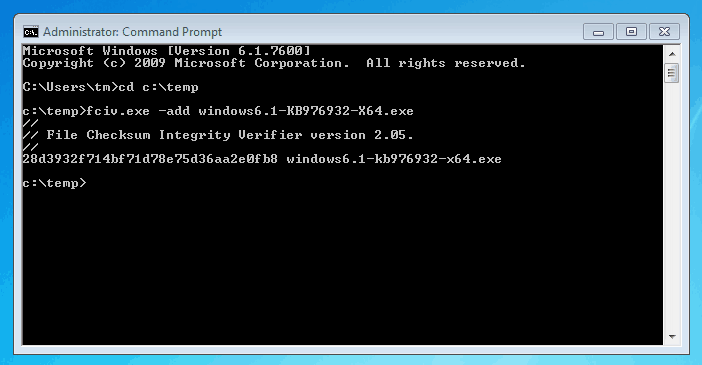


You will then right-click on it and select Run as Administrator. Open Windows Powershell by going to Start->Search and type in Powershell to bring up the program. We will be needing to specify this when we run our Powershell command. It looks like each file is using SHA256 to encrypt the hash which is considered to be very strong. You can now see a list of each file and to the right their hash. We are going to download this one and open it using Notepad on Windows. The checksum file contains all of the original hashes for the files listed below it. Where can we find these files’ hashes for us to check against? Usually you would find a file in the directory with the word hash or checksum like the one on top: We are going to download CentOS-x86_64-minimal.iso so that we can check its hash using Powershell.
#POWERSHELL CHECKSUM ISO#
For this demonstration we are going to use an ISO for CentOS 8 from Leaseweb: Īs you can see, we have a list of CentOS 8 installation ISOs that we can download. In this article, we are going to execute a very simple script that checks the hash of a particular file. Windows Powershell contains a vast array of tools and functions that make administration on Windows easy and efficient. Microsoft being one of those companies makes the perfect use case. While there are many programs out there that can check file hashes, it’s best that you use a tool provided directly from a known company. Here’s how you can check a file’s hash with Windows Powershell.īy checking a file’s hash, you will know that the one you’ve downloaded is the right one and not from a malicious attacker. In some cases, files going between the server and the user can be manipulated, especially if the connection is HTTP and not HTTPS. Checking to make sure that a very important file you’ve downloaded from the internet is the original one.


 0 kommentar(er)
0 kommentar(er)
